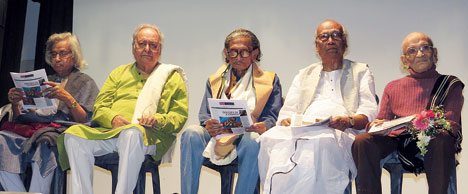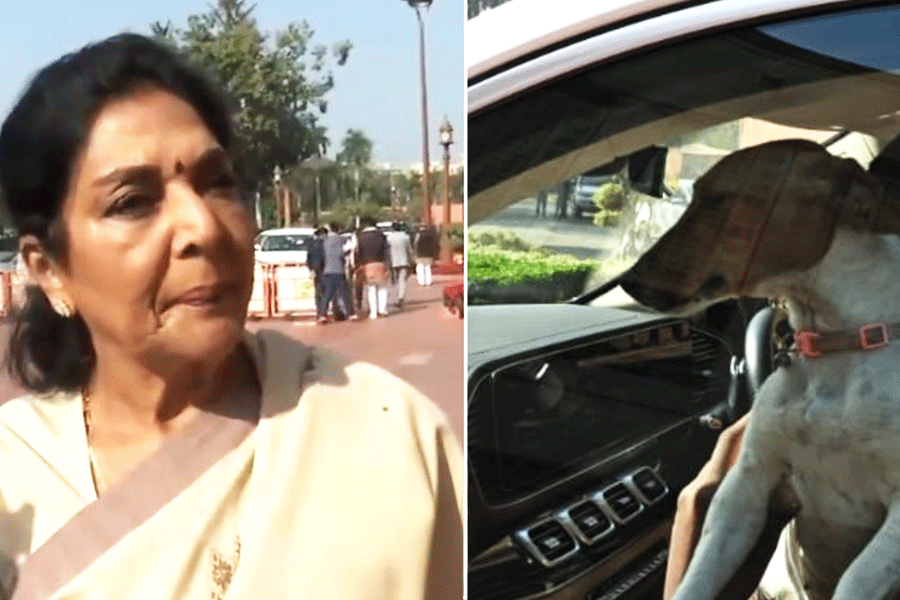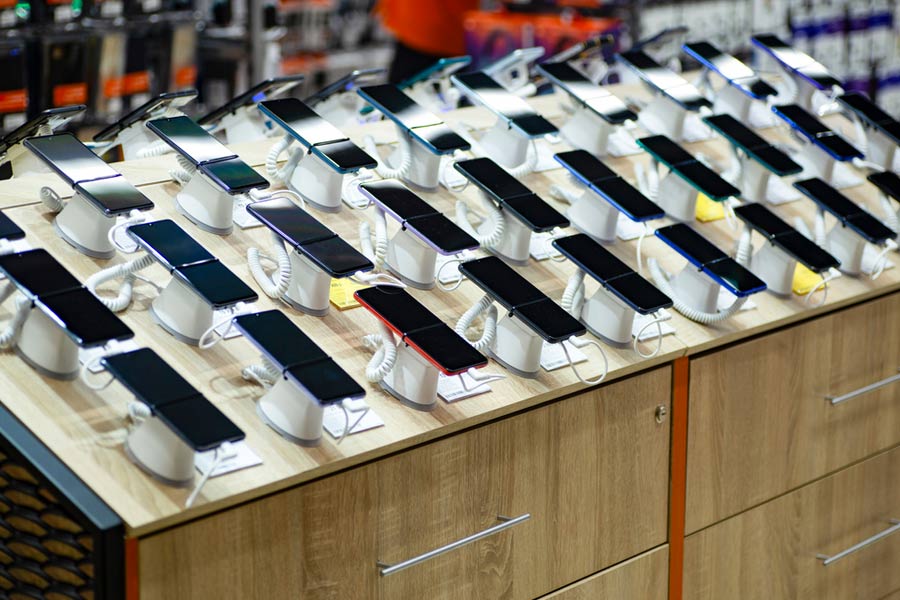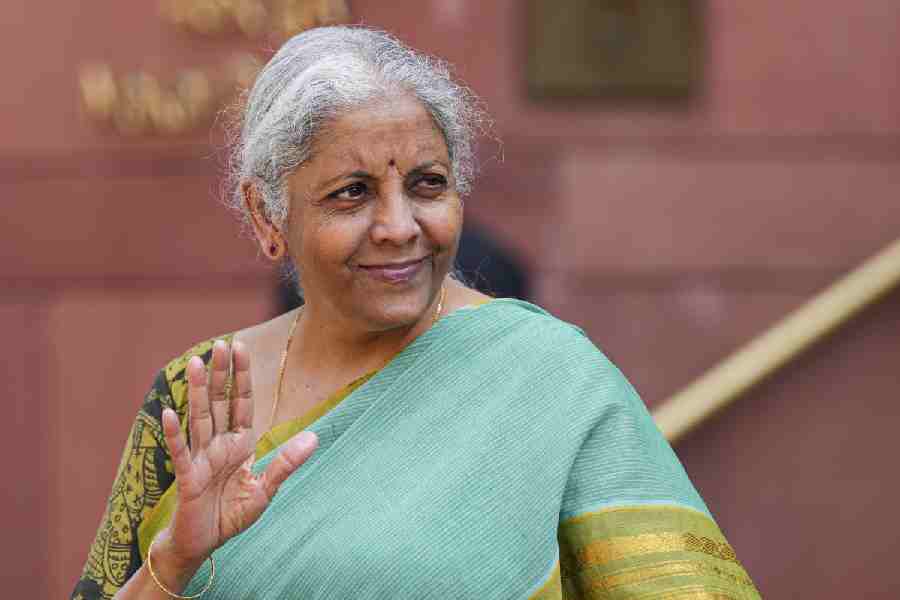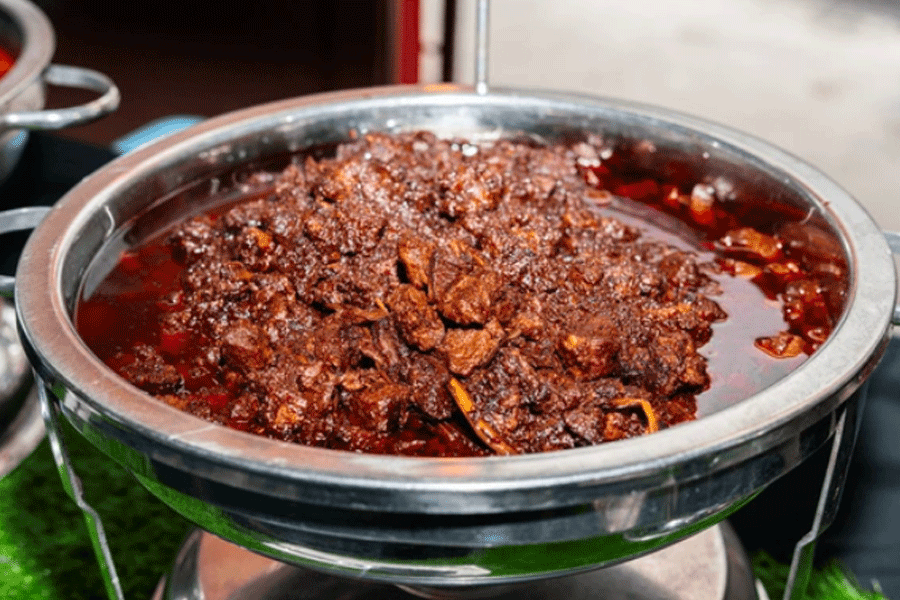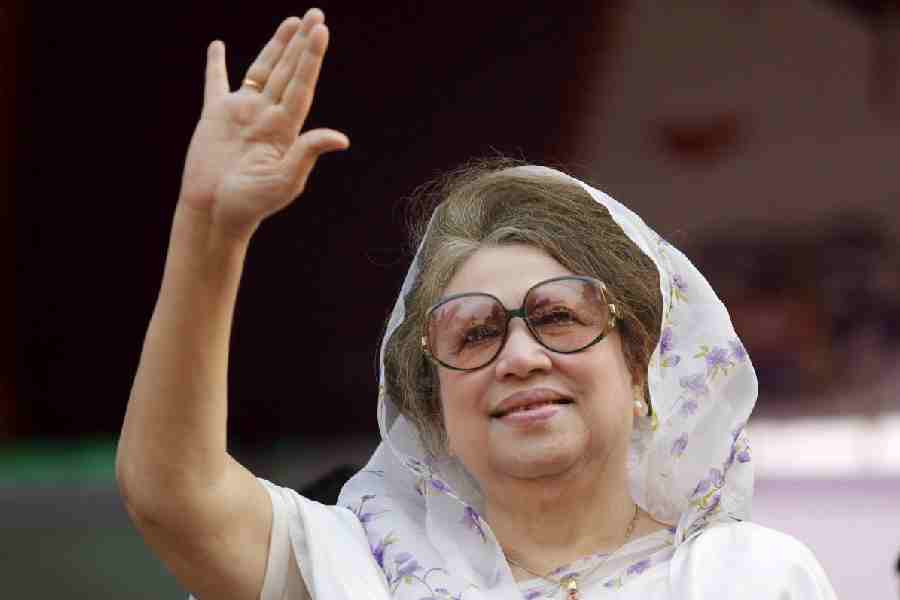

He may have stepped into his 90th year on January 1 but Rabin Mondal still has to draw at least a line to get by a day. “Eta ekta brata,” smiles the sprightly figure as he walks towards the stage to be felicitated by fellow artists and friends last Saturday at a programme organised by Kalpanirjhar at Birla Academy.
“Rabinda’s portraits used to attract us as college students — those pain-stricken faces he drew, basking in joy of life despite untold sufferings writ on them. He taught us about natural primitivity in human beings,” said art critic Manasij Majumdar.
Drawing on Majumdar’s comment that Mondal’s paintings are mostly with the Delhi art gallery, artist Jogen Chowdhury rued the lack of a museum in Bengal where the state’s artistes could have been properly exhibited. “Bengal has made the maximum contribution in the country’s art history. If we could build a museum we could show the evolution of our art from Chitpore wood cut, Kalighat pata, Bangla pata down to the Anglo Indian school. It could have helped our tourism industry too,” he said, adding that 33 per cent of France’s income from tourism comes from the art galleries.
Mondal’s close friend Soumitra Chatterjee also came by for some time. “In 1946, my father was posted in Howrah and we all shifted there. Our next door neighbour had two sons who moved in a larger group. That is how I came to know Rabin Mondalda. When Gandhiji came to Howrah Maidan, he sat at the base of the stage and painted him. He changed direction many times in his artistic career. At one time, he was influenced by Van Gogh. He was ill for a period and was confined at home like Amol in Daakghar. He was close to my father and brothers too. I get back my childhood on seeing him,” said Chatterjee.


Poet Sankha Ghosh referred to a conversation he had just been having with Mondal. “He was talking of factory hands living in the area where he grew up. Perhaps that is where he found the faces he drew. But I often wondered from where the sweetness comes on his canvas.”
Mondal responded by talking on the musical influences around him. “Everyone at home played one instrument or the other. My oldest uncle was a lawyer and played the mridangam or pakhwaj. My father came back from the factory and played the violin or clarinet. When he played the harmonium, he would ask me to bellow as he played it like a piano, with both hands. Mejojyatha was Devdas. When he expired, it was said of him “ultopalta kheye ultei gyalo.” He played the sitar as that he felt, kept his wife from bothering him. ‘Elei bolbe eta nei, seta nei,’ he would say of her.”
Author Debesh Roy was the last speaker of the evening. He compared Mondal’s watercolour portraits to
Picasso’s portrait of his first wife. “People thought at the time it looked nothing like her. Years later, they realised he had drawn her future self. Mondal’s pictures too hold up the mirror to the future of Bengalis.”
Mondal’s neighbour in his IB Block home, Bipin Goswami, also spoke on the occasion.
Sudeshna Banerjee
Pictures by author

